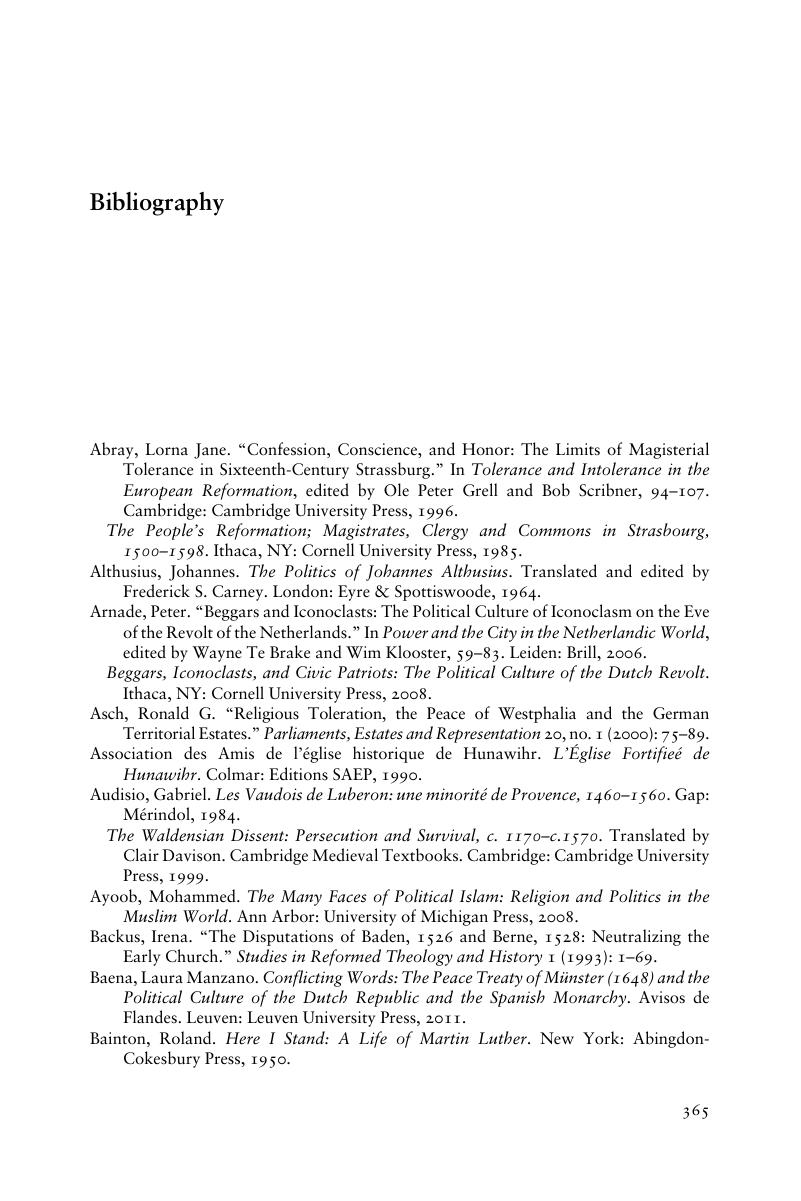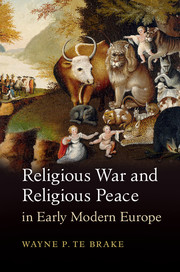Book contents
- Religious War and Religious Peace in Early Modern Europe
- Cambridge Studies in Contentious Politics
- Religious War and Religious Peace in Early Modern Europe
- Copyright page
- Dedication
- Contents
- Figures, Illustrations, and Tables
- Preface
- 1 Religion and Violence, War and Peace
- Phase I 1529–1555
- Phase II 1562–1609
- Phase III 1618–1651
- Conclusion
- Bibliography
- Index
- Books in the Series
- References
Bibliography
Published online by Cambridge University Press: 23 February 2017
- Religious War and Religious Peace in Early Modern Europe
- Cambridge Studies in Contentious Politics
- Religious War and Religious Peace in Early Modern Europe
- Copyright page
- Dedication
- Contents
- Figures, Illustrations, and Tables
- Preface
- 1 Religion and Violence, War and Peace
- Phase I 1529–1555
- Phase II 1562–1609
- Phase III 1618–1651
- Conclusion
- Bibliography
- Index
- Books in the Series
- References
Summary

- Type
- Chapter
- Information
- Religious War and Religious Peace in Early Modern Europe , pp. 365 - 389Publisher: Cambridge University PressPrint publication year: 2017

